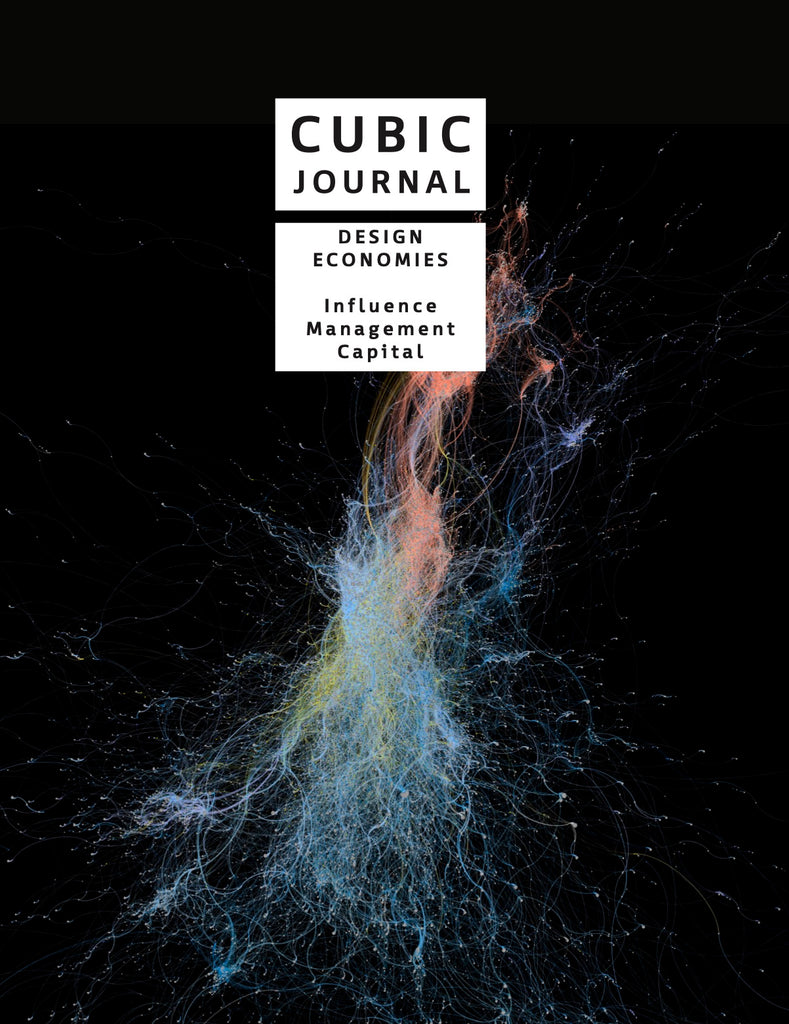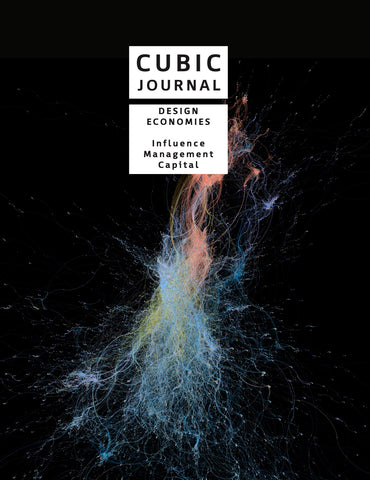Your cart is currently empty!
Vormgeving
Cubic Journal Issue #6 Design Economies
+++Influence - Management - Capital+++
+++Jörn Bühring, Brigitte Borja de Mozota, Patricia Moore [eds.]+++
+++
| A peer-reviewed journal published in conjunction with Cubic Society and Cubic Research Network
| An academic discussion within the pursuit of advancing knowledge via design disciplines
The world is changing, and so are the demands that these changes exert upon the design industry, on businesses and society as a whole. In this issue, we focused our attention on design as a strategic asset to the organization, one which can be harnessed in an effort to identify opportunities for new design activities and outcomes. As our research demonstrates, design (in theory and practice) tends to elevate and enhance the role of the organization as a catalyst for change, influencing strategic decisions, producing clear visions, shared beliefs, and values which assume a more holistic conception of sustainable development. To make up for shortcoming in our ability to gain a holistic view of designs core capabilities, theories, and methods in business economics, as well as the pertinence the design function and job position (e.g., design leadership) has in organizations, we introduced a conceptual model with the aim to synthesize the question of design strategy and business strategy and its relationship to achieving its goals when faced with the challenges of our time. In summary, we have reached consensus on two critical issues: first, the need for a continuous “survey” process with Design industry stakeholders around the variables which make up the key performance indicators (KPI) of Design value. Second, a more collaborative approach between research labs welcoming designers, academics, and strategy practitioners. This issue includes both the papers from academia and professionals we received through our call, as well as the results of a complementary survey conducted by the editors with Chief Design Officers.
Influence - Management - Capital
€25.00
Cubic Journal Issue #6 Design Economies
Influence - Management - Capital
€25.00
| A peer-reviewed journal published in conjunction with Cubic Society and Cubic Research Network
| An academic discussion within the pursuit of advancing knowledge via design disciplines
The world is changing, and so are the demands that these changes exert upon the design industry, on businesses and society as a whole. In this issue, we focused our attention on design as a strategic asset to the organization, one which can be harnessed in an effort to identify opportunities for new design activities and outcomes. As our research demonstrates, design (in theory and practice) tends to elevate and enhance the role of the organization as a catalyst for change, influencing strategic decisions, producing clear visions, shared beliefs, and values which assume a more holistic conception of sustainable development. To make up for shortcoming in our ability to gain a holistic view of designs core capabilities, theories, and methods in business economics, as well as the pertinence the design function and job position (e.g., design leadership) has in organizations, we introduced a conceptual model with the aim to synthesize the question of design strategy and business strategy and its relationship to achieving its goals when faced with the challenges of our time. In summary, we have reached consensus on two critical issues: first, the need for a continuous “survey” process with Design industry stakeholders around the variables which make up the key performance indicators (KPI) of Design value. Second, a more collaborative approach between research labs welcoming designers, academics, and strategy practitioners. This issue includes both the papers from academia and professionals we received through our call, as well as the results of a complementary survey conducted by the editors with Chief Design Officers.








